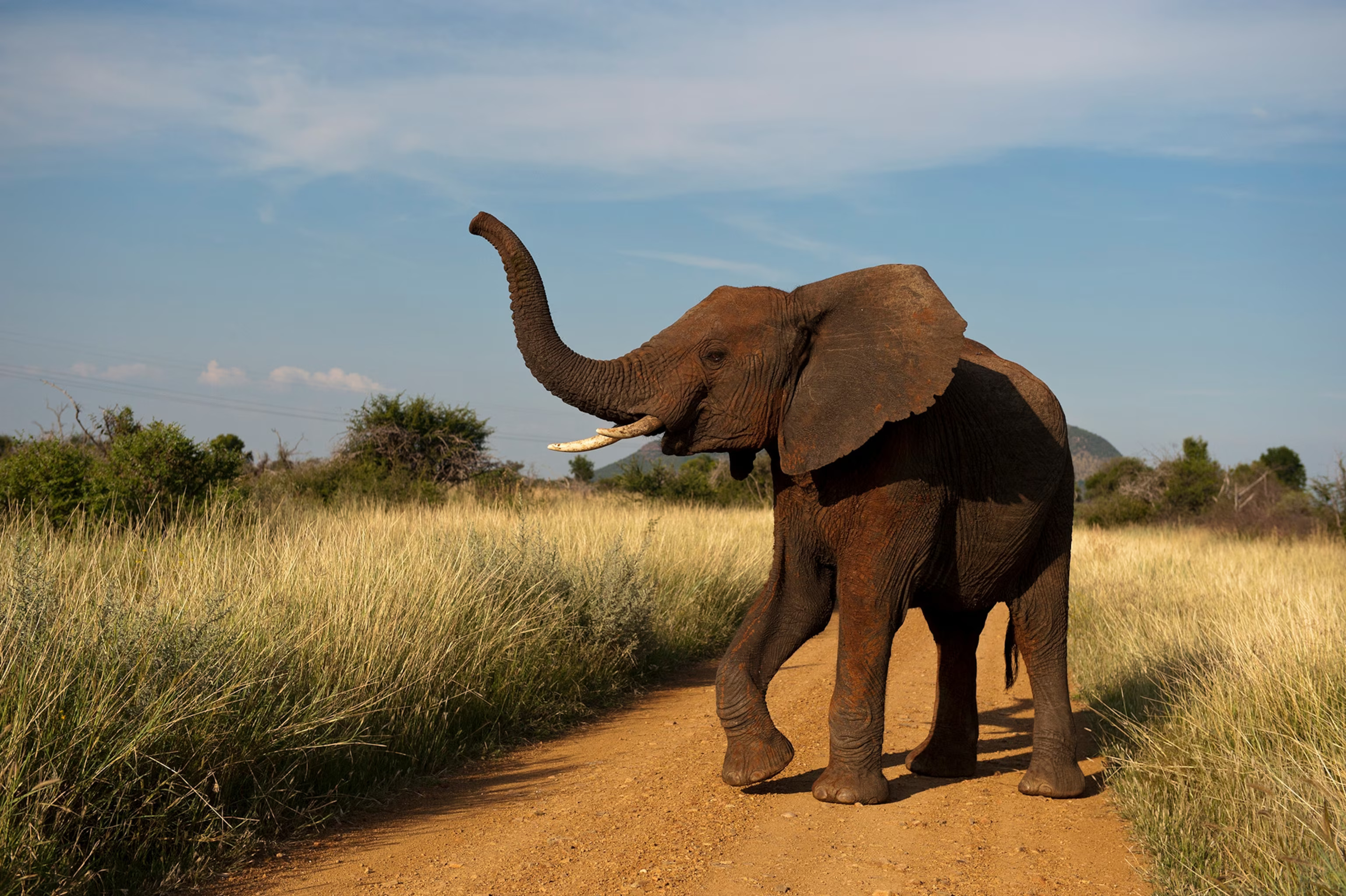The African Elephant : A Guide to Their Unique Characteristics
-

- by Admin
- Aug 16, 2024

The African elephant is the largest terrestrial mammal in the world, reaching a shoulder height of 3.3 meters and a weight of up to 6000 kg (6.6 tons). Its enormous ears, long, curved tusks, and extremely agile trunk define it.
The trunk of an African elephant combines the functions of the nose and upper lip. Elephants use their trunks for breathing, gripping items, caressing their young, sniffing, and sensing vibrations. Two opposable appendages, or fingers, at the apex of their trunk provide them extraordinary dexterity.
Elephants have modified incisor teeth called tusks, which are present on both sexes. While tusks are present at birth, they grow out after a year and are replaced by permanent ones. The elephant's tusks will keep growing during its lifetime. Elephant tusks are used in a variety of tasks, much like the trunk. They are employed in combat, mining, and foraging. They occasionally serve as a spot for the elephant's massive trunk to rest.
The enormous ears of an African elephant have various functions as well. The huge surface area of the ears aids in dissipating extra heat in the intense African sun. Another common method of visual communication is through the ears. Ear flapping can be used to express happiness or hostility.
And lastly, elephants' ears help them hear sounds across great distances, working in tandem with their trunk and foot soles. An elephant can typically hear the call of another elephant four kilometers distant. They have a 10 mile hearing range when everything is perfect.
Elephants are highly vocal animals, yet most of the time they use low-frequency noises termed "rumbling" to communicate.Elephants can actually hear and produce noises that are one to two octaves below the upper limit of human hearing.
Lower frequency sounds have a wider communication range since they travel farther than higher frequency noises. Elephants can also determine how far away another elephant is from them by listening to the pitch of their calls. The higher tones will gradually disappear from the sound as it goes farther, leaving a lower pitch.
African elephants are not only highly human in numerous ways, but they can also learn by observation and imitation. They show how kind they are by tending to the injured and lamenting the dead.
Their enhanced memory enables individuals to hold grudges, identify long-lost pals, and remember loved ones who have passed away. Elephants participate in a festive welcoming ritual that involves trumpeting, circling, and fluttering of the ears when a friend returns.
African Elephant Food
Every day, African elephants consume a vast range of plants, such as grasses, leaves, branches, shrubs, fruit, seeds, and bark. They consume up to 150 kg of plants each day.
Elephants in Africa: A Crucial Species
Keystone species are those like African elephants. They are essential to preserving ecological balance. In particular, African elephants consume fruits and vegetation, traverse great distances, and then deposit the seeds in rich dung mounds. New plants can cross-fertilize and flourish in several locations in this way. About ninety-nine distinct varieties of trees depend on elephants to proliferate.
Elephants in Africa also excavate tunnels to reveal hidden springs. This makes water available to smaller animals during dry spells. They uproot trees and plow paths through thick undergrowth, allowing more light to reach the ground and supporting a wider range of plant life.
Family Life
African Amboseli Elephant The survival of Kenyan elephants depends on their social network. A herd of moms and their offspring, sisters, and female cousins under the leadership of an older matriarch constitutes the sustaining social unit.
When they reach puberty, male elephants will leave the herd at the age of fourteen. After that, they splinter off from the bachelor herd and go in search of possible mates, joining a loose group of other bull elephants. The female elephant will begin her 22-month gestation period after a successful mating, and the male will go to join other herds.
Aunts, sisters, and cousins assist in caring for the baby calf when it is born. All of the herd's elephants gain important knowledge about raising children in this way. Elephants only give birth once every five years, thus the survival of their progeny depends on their being raised well.
Status of Conservation
Given their status as a keystone species, African elephant conservation is an urgent need. Urban sprawl and poaching are two major threats to their survival. As a result, the IUCN Red List lists the African elephant as a vulnerable species.
0 Comments:
Leave a Reply